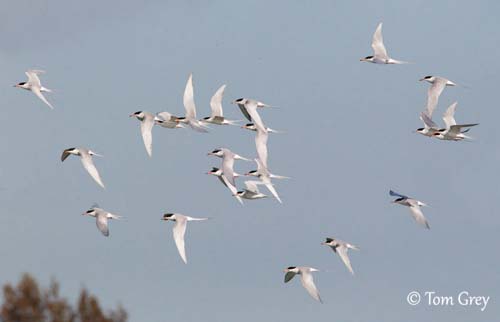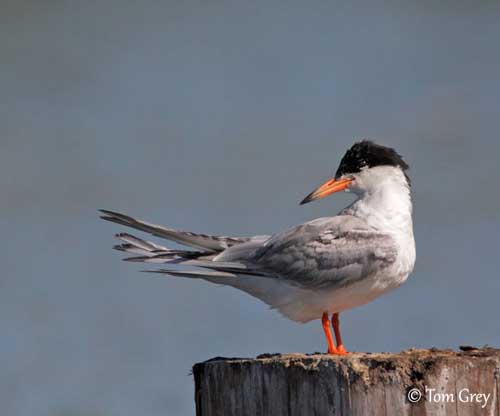
Fr: Sterne de Forster
All : Forsterseeschwalbe
Esp : Charrán de Forster
Ital : Sterna di Forster
Nd: Forsters Stern
Sd: Kärrtärna
Photographers:
Tom Grey
Tom Grey's Bird Pictures
Tom Merigan
Tom Merigan’s Photo Galleries
Text by Nicole Bouglouan
Sources:
HANDBOOK OF THE BIRDS OF THE WORLD Vol 3 by Josep del Hoyo-Andrew Elliott-Jordi Sargatal - Lynx Edicions - ISBN : 8487334202
FIELD GUIDE TO THE BIRDS OF NORTH AMERICA - National Geographic Society - ISBN: 0792274512
BirdLife International (BirdLife International)
Bird Web (Seattle Audubon Society)
All About Birds (Cornell Lab of Ornithology)
South Dakota Birds and Birding (Terry L. Sohl)
Wikipedia, the free encyclopaedia
Forster’s Tern
Sterna forsteri
Charadriiforme Order – Laridae Family
BIOMETRICS:
Length: 33-36 cm
Wingspan: 73-82 cm
Weight: 127-193 g
DESCRIPTION:
The Forster’s Tern is an elegant bird of the North American wetlands.
The adult has pale grey upperparts and white underparts.
On the head, forehead, crown and nape are black. The bill is orange-red. The eyes are dark brown. Legs and feet are orange-red.
On the upperwing, we can see the pale silvery-white primary flight feathers contrasting with the wing-coverts. The long grey tail is deeply forked and shows white outer edges.

In non-breeding plumage, head and hindneck are white, but there is a conspicuous black ear patch. The nape is greyish. The bill is black while legs and feet are duller.
Both adults are similar.
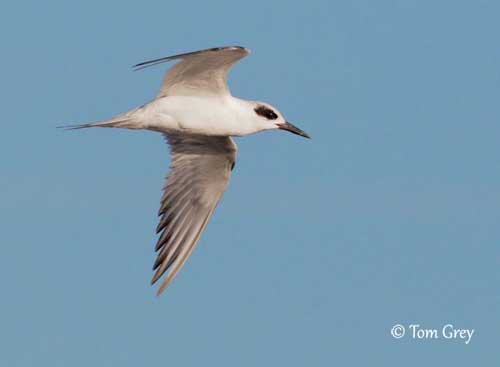
The juvenile has greyish-brown plumage with pale brown tinge on rear head, mantle and upperwing-coverts.
After the moult into 1st winter plumage in August-October, the young bird becomes very similar to the non-breeding adult, but it has pale grey nape and tipped-black outer rectrices.
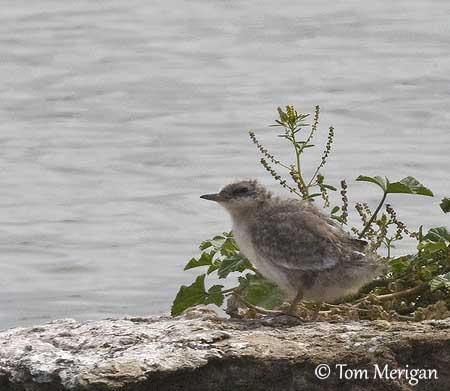
VOICE: SOUNDS BY XENO-CANTO
The Forster’s Tern’s typical call is a descending “kerrr” and the alarm call is a hoarse “kyarr”.
HABITAT:
The Forster’s Tern frequents all types of wetlands where it breeds, such as freshwater lakes, inland and coastal marshes and salt-pond dykes. It is rarely found on sand, mud or rocky islets, the most suitable breeding habitat being dense mats of floating and emergent vegetation. It favours shallow water, between 30 cm and 1 metre depth.
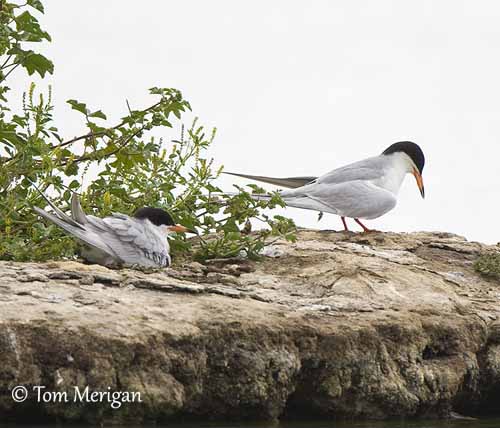
RANGE:
The Forster’s Tern breeds inland in North America, from British Columbia to NE Mexico, and it winters along the coasts from S California to Panama, and from N Carolina to Gulf of Honduras.
BEHAVIOUR:
The Forster’s Tern feeds primarily on small fish of about 5-7 cm length, but it also consumes crustaceans and aquatic insects.
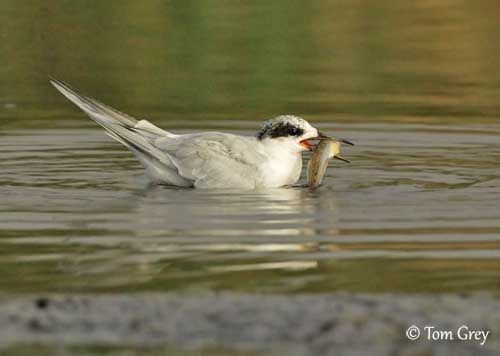
As many terns, it feeds by plunge-diving or by dipping to surface. It flies and hovers over the water before to catch the fish below the surface. It may occasionally dives from a perch as kingfishers do.
This species may sometimes establish and maintain feeding territories.
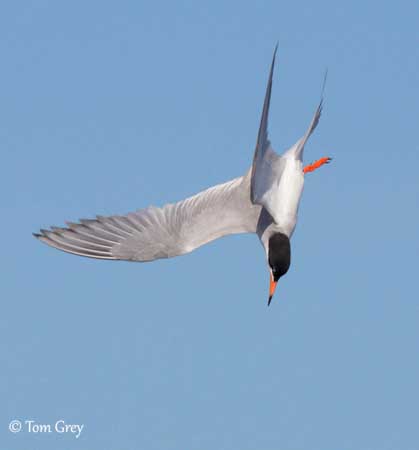
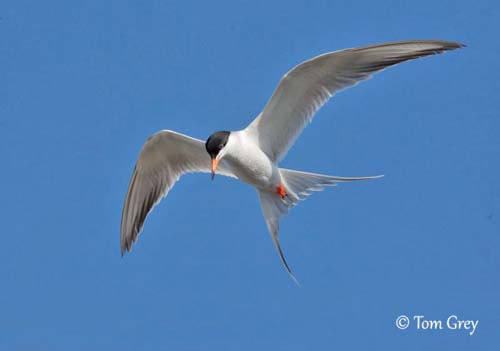
The Forster’s Tern breeds in loose colonies, and some defence displays can be observed to defend the territory.
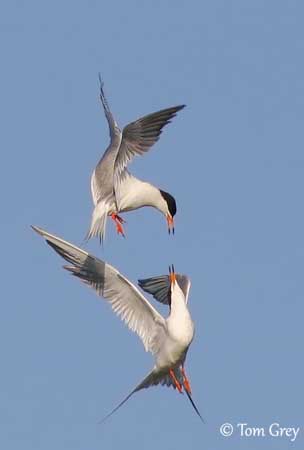
Ritualized displays also occur between mates, as well on the ground as in the air. The male usually brings back a fish to the female.
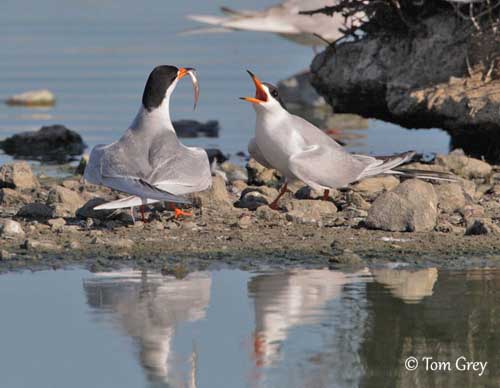
Then, both take off and fly together high in the air. Wingbeats are interspersed with glides on rigid wings.
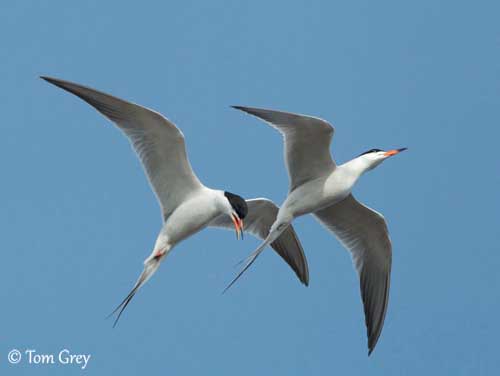
Courtship feeding occurs prior to copulation. The pair may mate several times in a day before the egg-laying.

The Forster’s Tern nests on floating and emergent vegetation in wetlands. The nest-site is defended by both adults, and they share all the nesting duties.
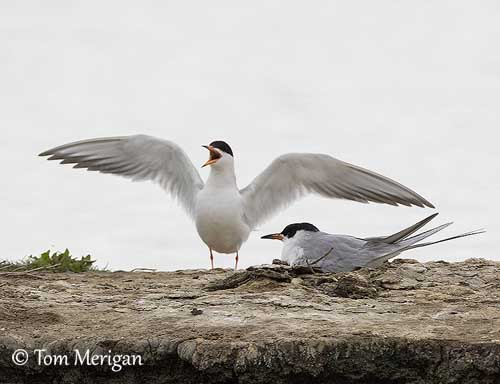
This species performs post-breeding dispersal before to migrate southwards.
FLIGHT:
The Forster’s Tern performs swift and graceful flight. Their elegant silhouettes make the flight displays very spectacular. Wingbeats are slower than in other terns’ species.
REPRODUCTION:
The breeding season occurs in April-May on Gulf Coast, and until late May elsewhere.
The Forster’s Tern usually breeds in loose colonies, from 5 to 250 pairs, and may occasionally nest solitary.
The nests can be widely spaced, depending on the surface of the breeding area, from 20-50 cm apart to 3-20 metres apart.
This is a depression in the floating vegetation, but also occasionally on sand or coarse gravel islands. The nest is made with grass and sedges on dry mud or grassy hummocks. The cup is lined with softer materials and shells.
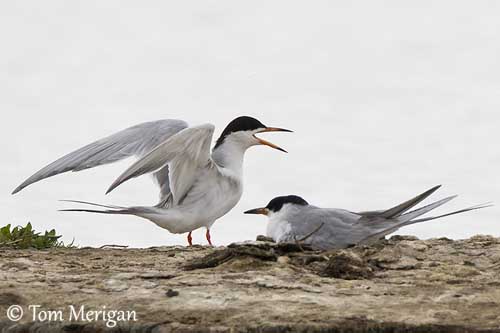
The female lays 2-8 olive to buff eggs with dark brown markings. Incubation lasts 23-26 days. At hatching, the chicks are able to walk very soon, but they remain at nest, waiting for the food brought by both parents.
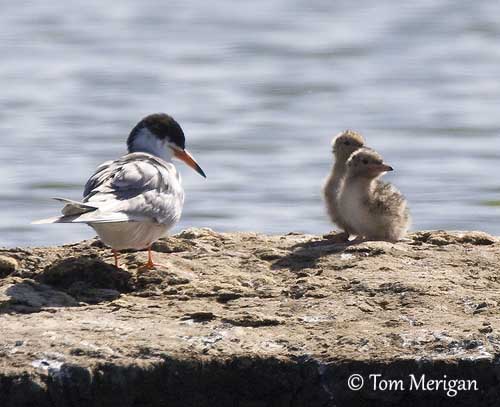
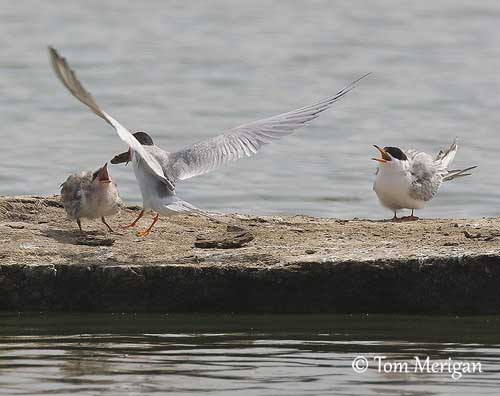
If the first clutch is flooded, the female lays again, usually a larger clutch. Nest losses are due mainly to flooding, but predation by mammals and large fishes occur too.
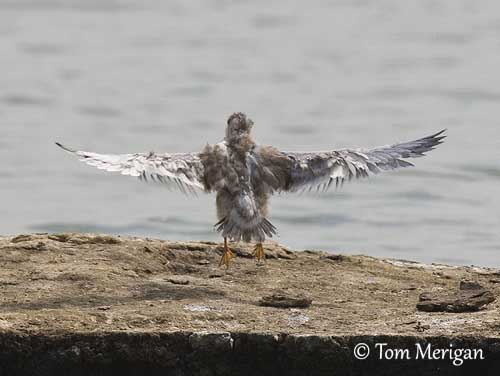
DIET:
The Forster’s Tern feeds on fish of about 5-7 cm long, and also takes crustaceans and aquatic insects.
This species feeds by plunge-diving and dipping to surface.
PROTECTION / THREATS / STATUS:
The Forster’s Tern has large range and the species has extended it northwards in recent decades. It has adapted to other suitable habitats with the loss of numerous coastal marshes.
Populations are not currently threatened.
